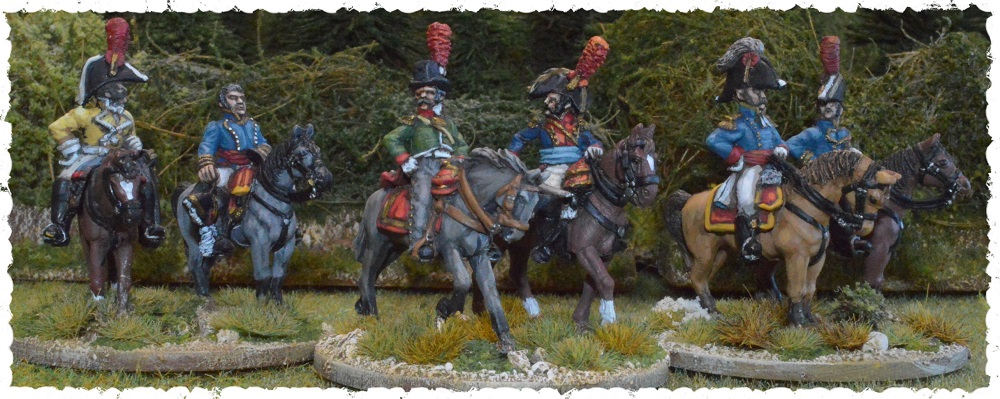1808 Spanish Napoleonic army

Fixing the sins of the past.
The army presented here started life many many years ago, way back when I had only one (osprey) reference book for researching Spanish uniforms. Over time I’ve slowly added random units to the army rather than follow any specific historical information. The result of which is that (once again) I’ve ended up with a bit of a mess on my hands. In the world of war-gaming there are those among us who are planners, taking the time to design and research an army before starting to collect and paint it. Sadly I’m not wired that way, more of the rip, shit or bust type of guy. I generally have paint on anything within an hour of getting it out of the mailbox.
So in an effort to atone for my past sins I’ve decided to start this page to document the rebuilding of my Spanish army. Here, I hope to show photos of both old units and new units as I tidy up this army once and for all.
From the ground up.
These models like all the other 28mm Napoleonic figures in my collection will be based in a format which after much trial and error I have found works best for all the rule systems I currently enjoy.
- Standard infantry battalions contain four, six figure 50mm/50mm/3mm plywood bases while two 25/50mm three figure stands are either added (for large battalions) or used to replace two of the 50/50 stands to represent under strength units.
- Skirmishers are mounted in pairs on a 100/50mm/3mm base.
- Cavalry regiments like infantry battalions are placed on four 50/50mm bases with two figures per base (8 to a standard regiment).
- Artillery batteries (3 guns) are mounted on three 50/100/3mm stands
- Limbers (one per battery) are composed of four horses and a limber needing a 50/150/3mm stand.
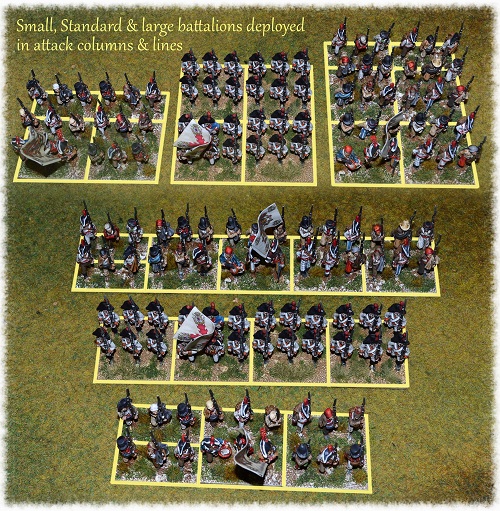
Skirmisher Stands
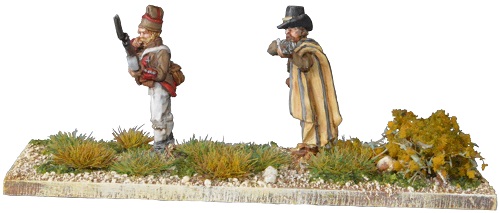
So far there are seven complete skirmisher elements for the army. Three stands of Cazadores (below) and four stands of second rate militia figures (left). The light infantry elements were cobbled together from spare Front Rank figures left over from the first time I re-based these troops. Originally painted as line infantry these figures needed a quick repaint in order to better match the changes I planned to make to this army. From the top down they are painted as 2nd Cataluña, Gerona and Barbastro light infantry coys.
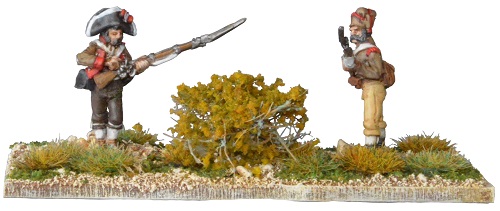
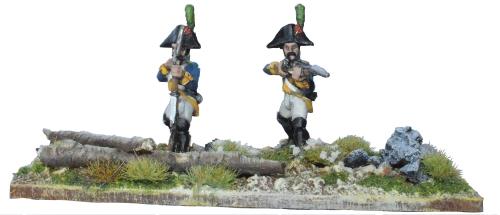
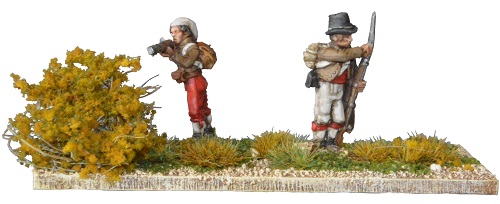
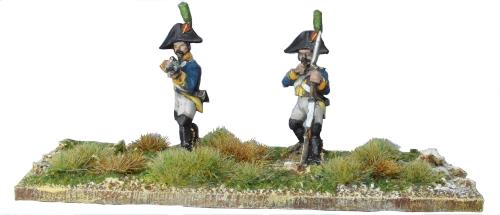
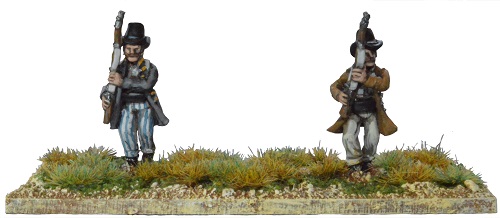
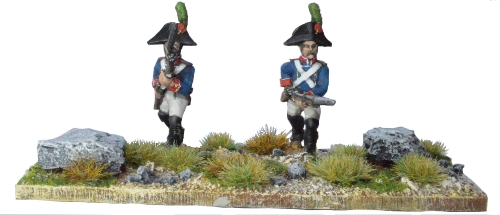
Line Battalion Uniforms
One of the good things about building this web site is that it has made me take a closer look at whatever I’m about to post for all to see. In effect I’ve had to lift my game so to speak when researching troop formations and what they wore into battle. Definitely not one of my strong points, so I’ve decided to create my own painting/uniform guide for each Napoleonic army I add to the site. This should not only help me when painting extra units at a later date, but also hopefully provide some food for thought to anyone else considering painting a Spanish army.
That said, the information presented here is only the result of some very basic research on my part. I would recommend cross referencing it with your own material before proceeding with any brush work. Personally I have found researching uniforms in the horse and Musket period both time-consuming and fraught with contradictions. Like I’ve stated elsewhere on the site I have a very limited amount reference material and time to dedicate to this side of the hobby, but I’m also a little tired of getting it so wrong all of the time.
The uniform plates shown below are a result of cross referencing information from the following sources.
- Arms and Uniforms The Napoleonic Wars by Liliane and Fred Funcken
- To Assure My Dynasty 1808 in Iberia ESR campaign guide by D. M. Ensteness
- Spanish armies of the Napoleonic Wars by Otto Von Pivka and Michael Roffe (Osprey’s men at arm series)
- Napoleon’s Europe by R.S. Whiteman. A wargamers guide to the countries and armies in Europe at the time of the Napoleonic wars.
- Uncle google sites like Steven’s Bagagan’s Spanish infantry painting guide and Wikipedia’s Spanish uniforms of the Napoleonic Wars
This was a long winded and at times a somewhat confusing process as each source offered different spellings for the same units while also giving conflicting dates certain uniform patterns were worn.
Uniform Distinctions for Line regiments up until at least May 1808
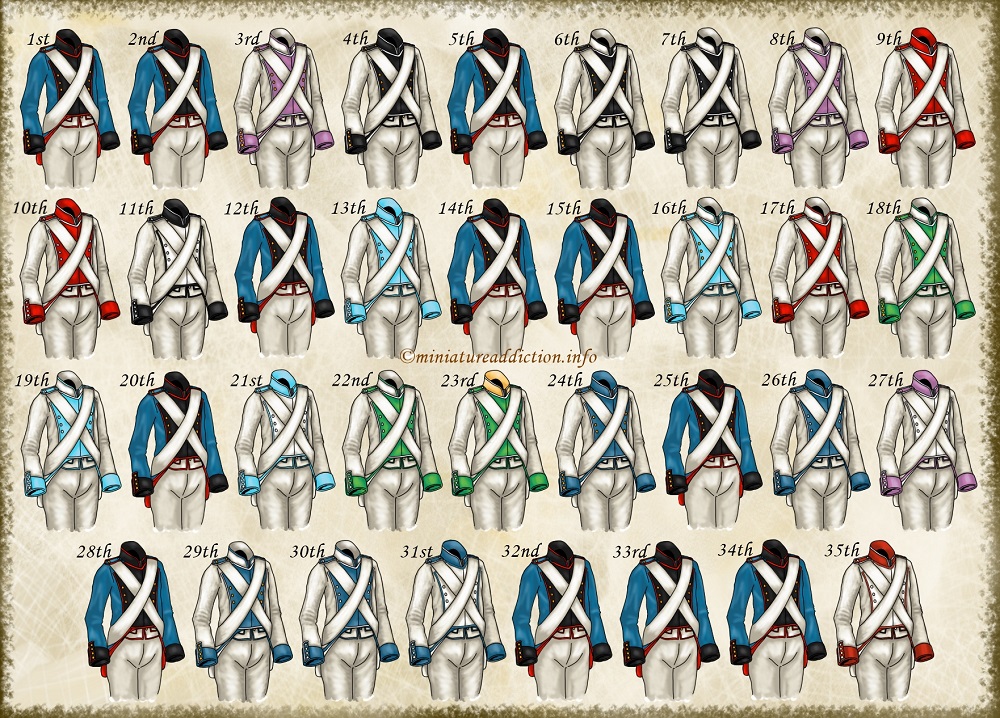
Piping Discrepancies.
Depending on the source material the coat tail turn-backs and shoulder straps for the M1805 uniform patterns are described in one of two ways. Either white and edged in the regimental colour or in the regimental colour and edged white. I found many examples of both variations in the information I had to hand.
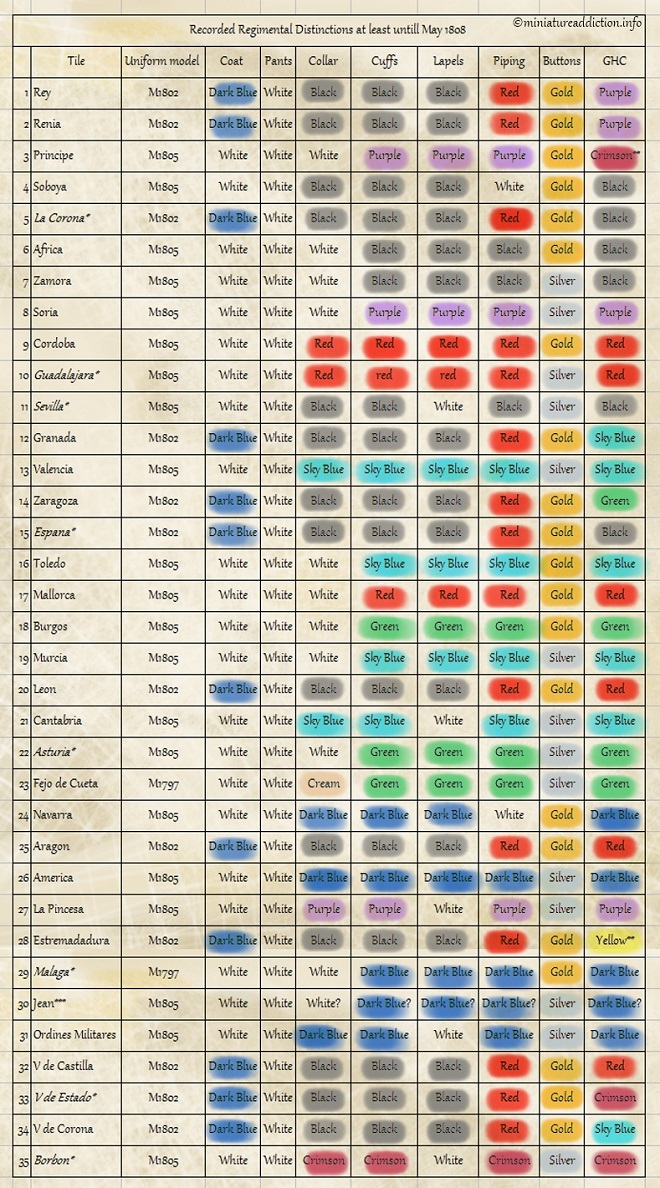
General Chart notes
This chart details the uniform plates shown above. It is the best mix (I could work out) from all the source material mentioned above. Regimental names have been added although their spelling varies from book to book (eg de Tixos de Cueta, Fixo de Cueta, Fijo de Centa).
GHC: Is the colour of the long back cloth on the grenadier’s cap (Grenadier’s Hat Cloth). Generally these match the regiment’s trim colour in the M1805 uniform patterns.
Officers: Wore red sashes with gold tassels while their epaulettes matched their regimental button colour (gold or silver)
* (Italics) Units that were not depicted in ESR campaign book’s uniform guide.
**GHC Grenadier fur cap clothes illustrations in the ESR campaign book that don’t match the regiment’s M1805 uniforms trim colour.
*** The ESR campaign’s uniform guide shows the 30th Jean regiment with red collar, cuffs, piping and Lapels. All other sources show them with dark blue as shown here.
Piping: The M1805 pattern uniforms were generally piped white around the collar, cuffs and Lapel trims with the regimental colour only shown on the waist coat’s pockets and trim. However, when the Lapels or collars of a regiment were white, then they would be piped in the regimental colour. On M1802 pattern uniforms all collar, cuffs, lapel and waist coat piping appears to be red.
30th Jaén additional information
Thought I would share a helpful little note I received from David of ESR clarifying their rendition of the 30th Jaén uniform.
I saw your notation about the 30th Jaén Infantry Regiment and that we showed it as red vs dark blue in our publication Iberia-1: To Assure My Dynasty, 1808 in Iberia. It is an interesting thing I thought I might take a moment to explain the variation from your other sources. The 30th Jaén Infantry began 1808 in the 1797 white infantry uniform – and did so with red facings and black turnbacks. The regiment continued to wear this through at least the end of March 1808. It was due to receive a “new” 1805 white uniform and appears that the uniform would place it in dark blue facings. The question becomes when it received the 1805 uniform and the answer is very uncertain. At least some officers are reported to have received it by the end of spring 1808, but it is not clear when the rest of the regiment the new(er) uniform. We’re currently working on finishing a new and heavily revised reprinting of Iberia-1 and we will be providing notations of such information in the new, expanded uniform guide, which caused me to think of your page and decide to provide this note. Hope it is helpful.
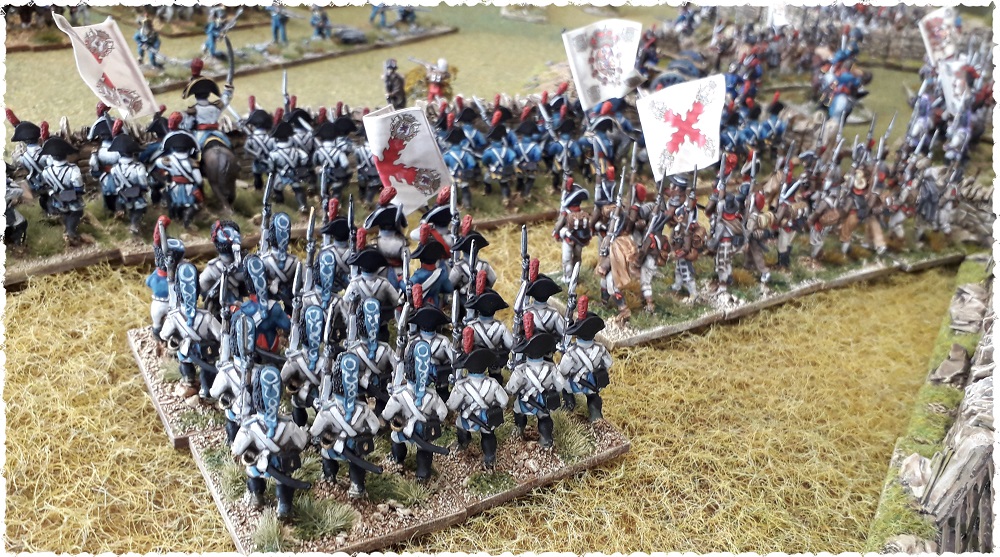
Making the best of it
As noted above the original core of this army was built labouring under information gleaned from just a couple of places. It was not until I had finished five battalions that I started to suspect things were going awry. The first of my problems turn out to be with the information I had followed regarding regimental facing colours. Units listed with orange facing in one publication were in fact denoted as red everywhere else. Although tricky to fix now that the figures have all been based never the less they would all need repainting. The biggest problem I had stemmed from the fact that I was under the impression regiments were made up of two musketeer battalions and one grenadier battalion. As a result of which I ended up with one full grenadier battalion in march attack and four line battalions that have no grenadier company’s (and only one of which is in march attack).
16th Toledo Line Infantry Regiment 1st & 2nd Battalions
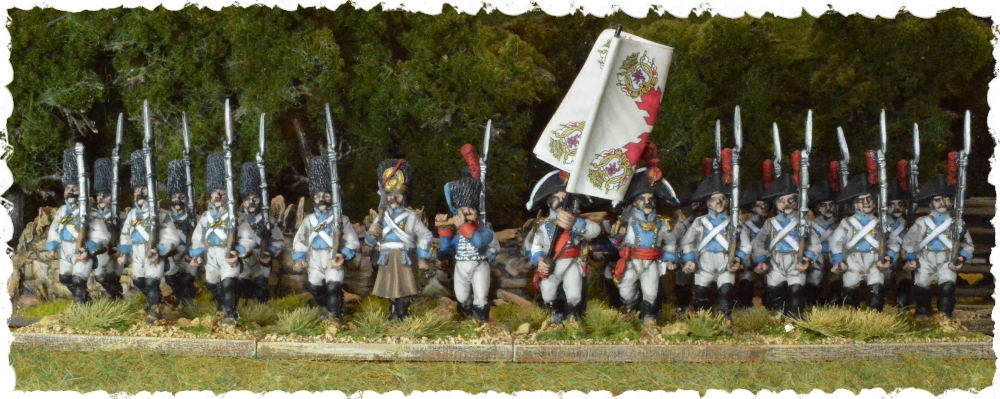
The Drummer’s coat, officer’s sash and all collar facings required repainting on these two units to bring them into line with my new research. Two battalions from the regiment were at the battle of Medina de Rióseco in General Portyago’s 4th Division. On the uniform plate below I have included possible shoulder strap and turn-back variations as mentioned early. The Grenadier’s hat cloth is an approximation of the many patterns that were used here.
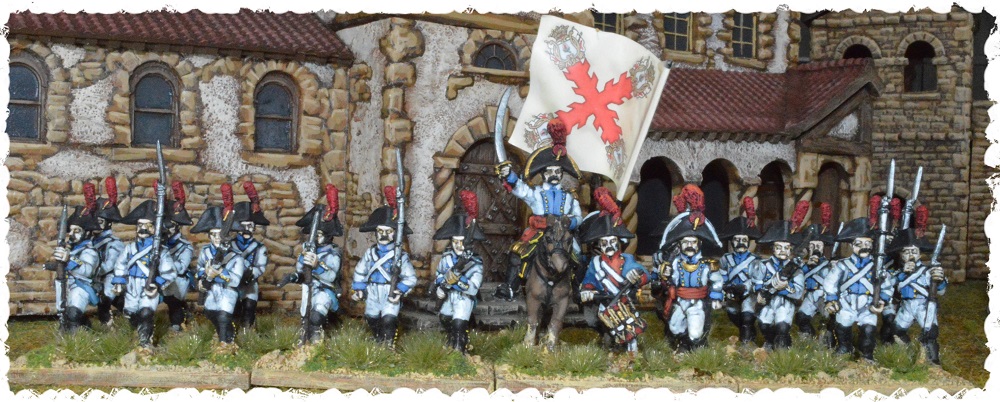
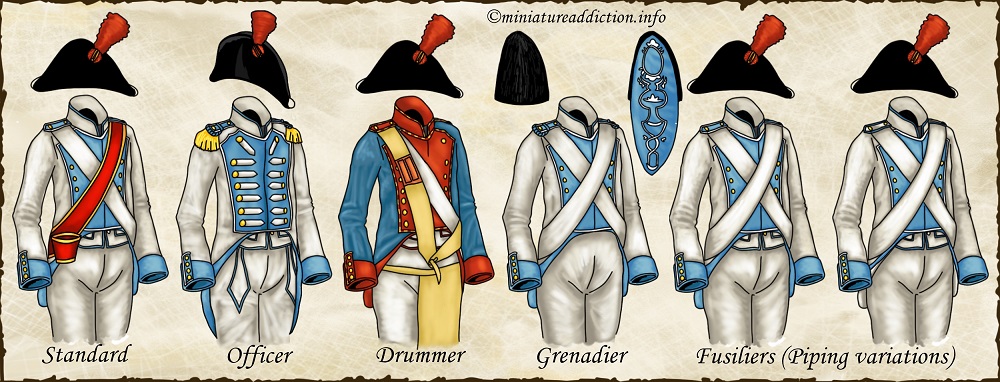
37th Irlanda (Irish) Line Regiment
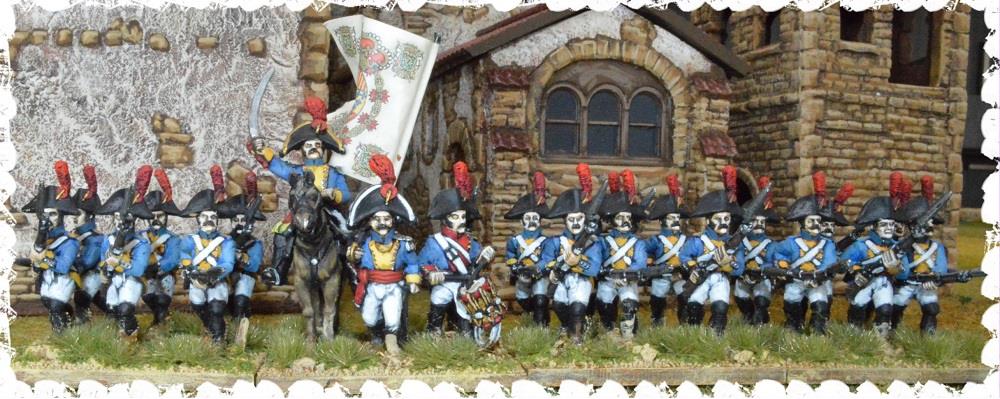
One of two battalions from the Hibernia regiment that formed part of General Cagigal’s 1st division in Blake’s army of Galicia. Like all the other front rank battalions featured here these were repainted to match the closest regimental facings from any unit that fought at Medina del Rióseco. I plan to fill in any gaps in the respective divisions at a later date eg the 2nd Battalion.
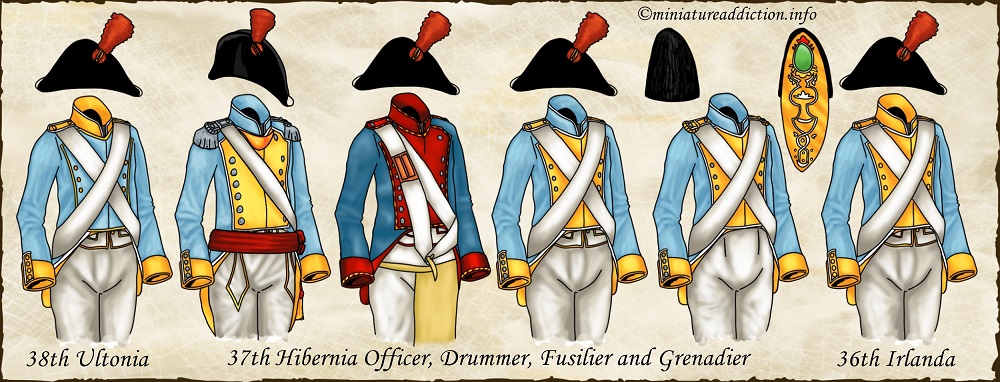
17th Mallorca Line Infantry Regiment 3rd Battalion
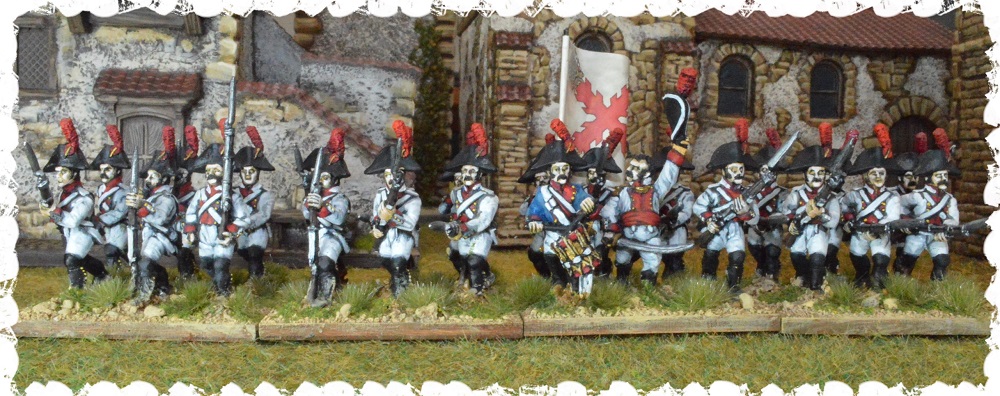
Only one battalion of the 17th Mallorca (Majorca) was present at Medina. Fighting in General Cagigal’s 1st division this unit is depicted carrying only a single (battalion) flag. A product of yet another hole in my early research as opposed to a cost saving plan each battalion should have two standards, the King’s colours and a battalion flag. This is not an easy fix so it has been dumped into the To Hard Basket at this stage of the game.
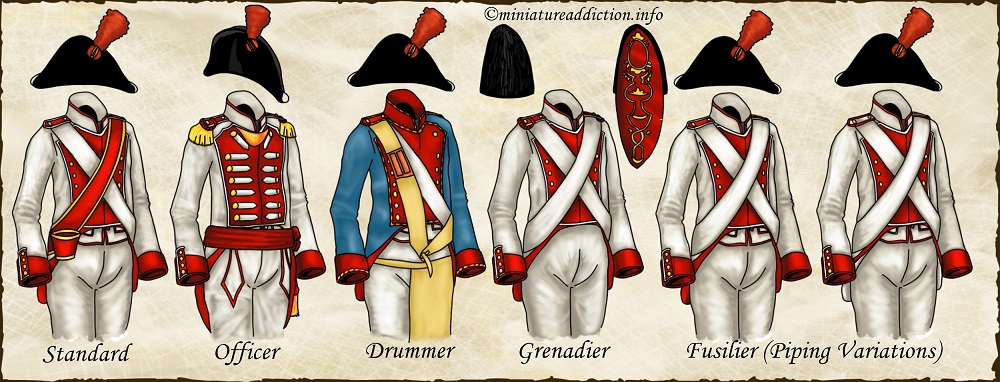
3rd Principe Line Infantry Regiment 1st Battalion
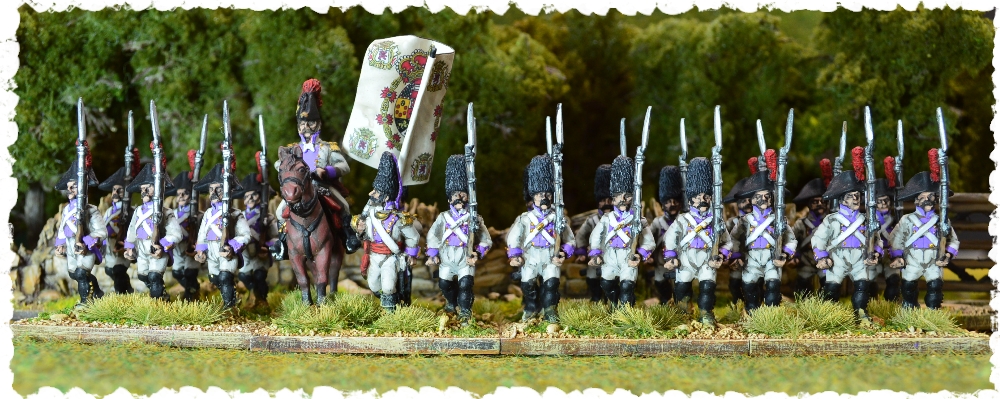
After a repaint followed by more research, another repaint and a final reshuffle of grenadier stands I have arrived at the following figure set out for the 1st battalion in each of my Spanish regiments. The unit pictured above consists of two stands (companies) of grenadiers and two stands (companies) of line infantry. This is based on the understanding that Spanish line regiments at this time were composed of ten Fusilier companies and two grenadier companies. These twelve companies were divided equally into three battalions with the two grenadier companies always going into the regiments first line battalion.
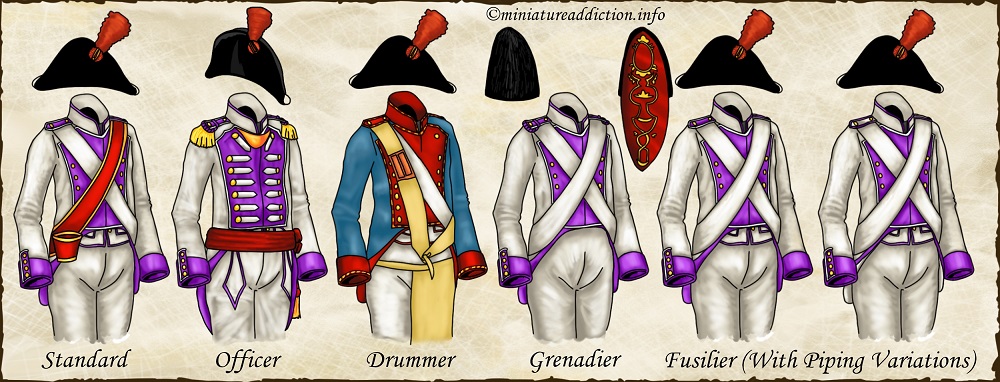
Militia Line infantry Battalions
A good mix of 1808-1809 civilian/infantry packs from the Perry brothers metal range were used to build these militia battalions. I have added a couple of basic uniform plates here, but I believe the clothing of these units would contain a wide selection of colours and styles.
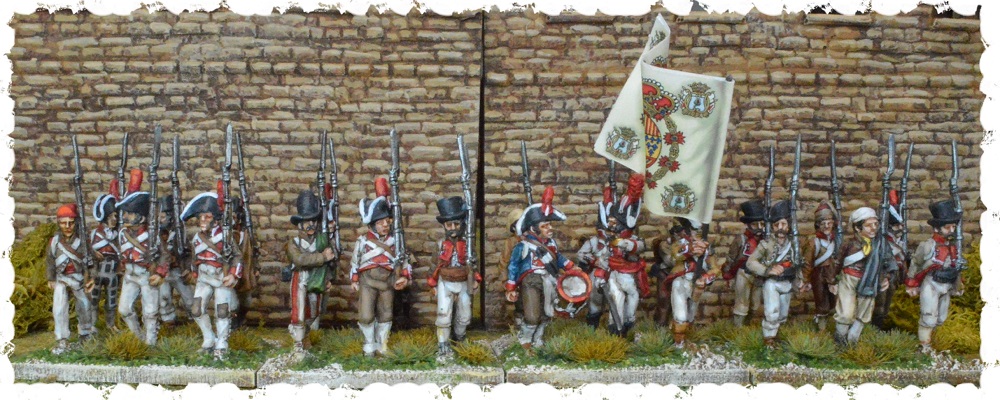
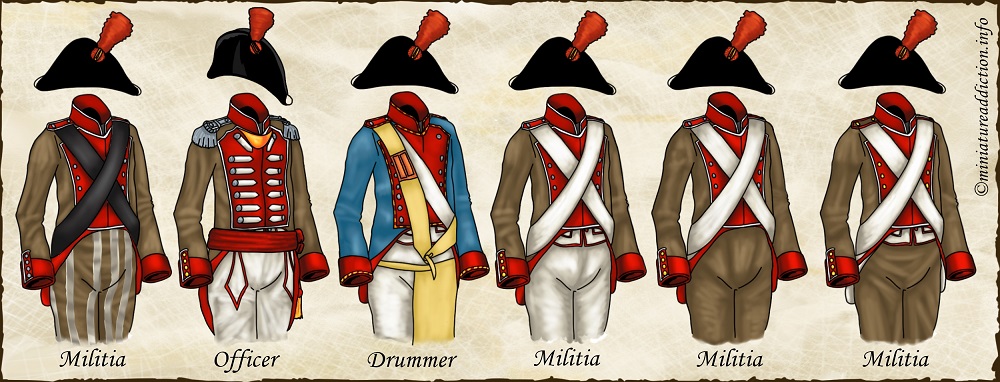
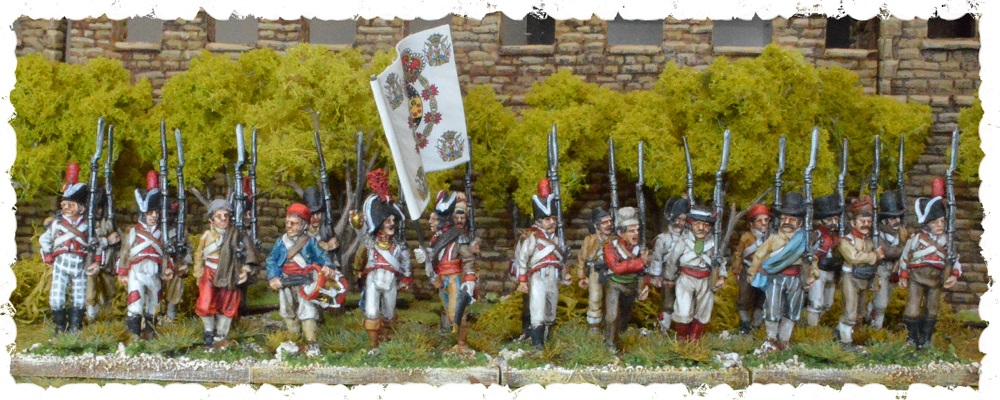
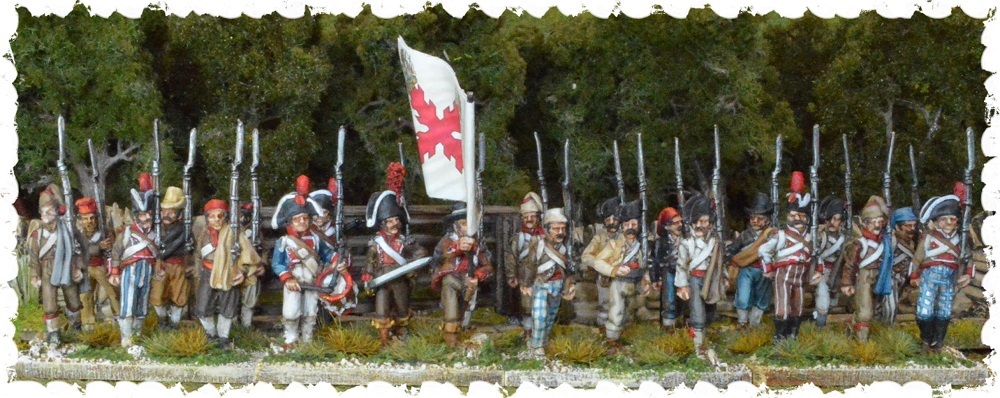
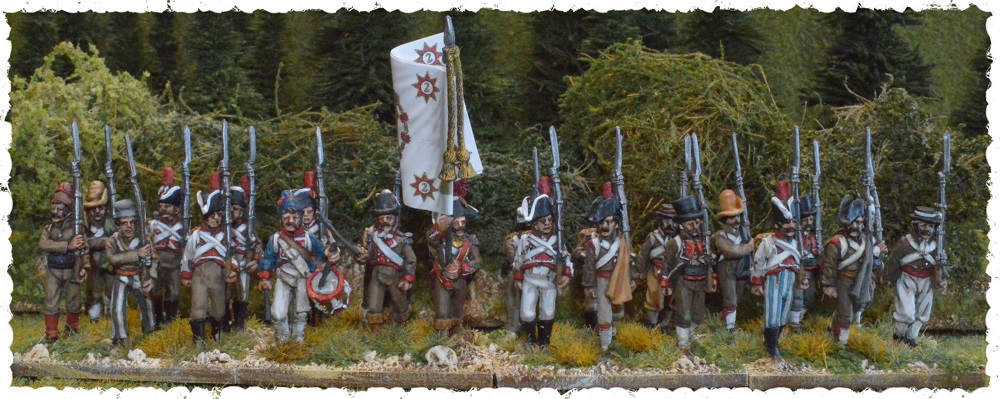
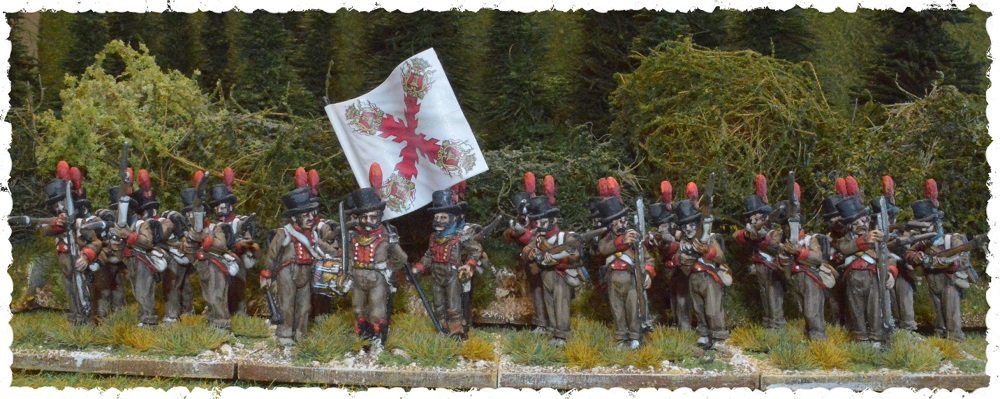
Although I have also completed a unit of dragoons, some Artillery and Generals I will add photos of these at a later date.
For the shake of completeness I have added a chart detailing the twelve M1805 uniform patterns for the battalions shown in dark blue above
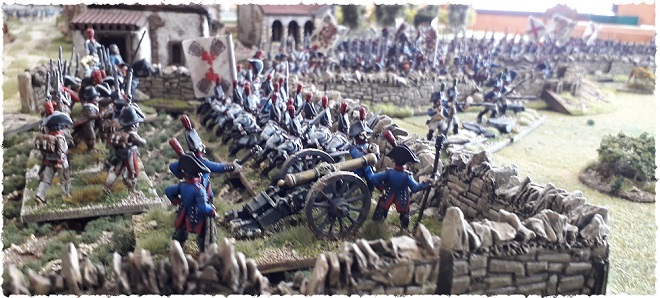
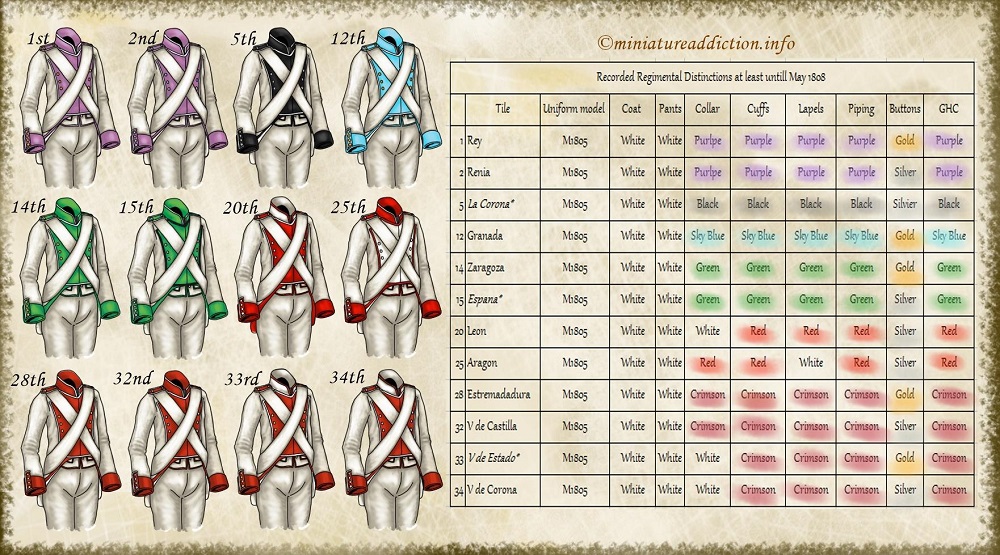
When painting these three command stands I wasn’t working from any particular reference material. Instead I imagined that the Spanish commanders of this time tailored their uniform to taste rather than following strick dress regulation.
